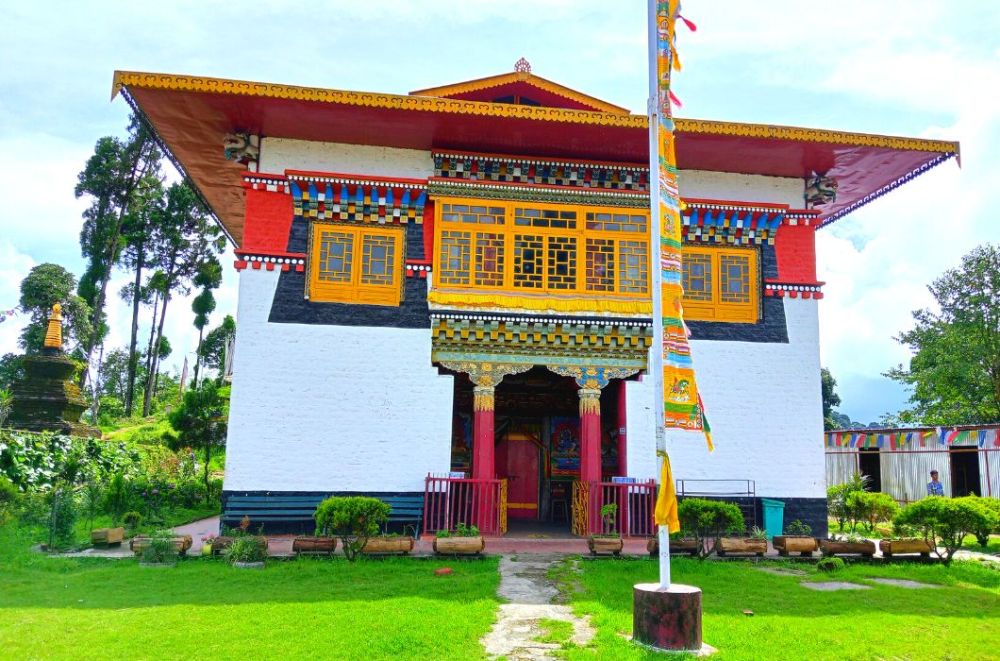

The Sangachoeling Monastery, established in the 17th century, stands as one of the oldest and most significant monastic institutions in Sikkim. Located on a ridge above Pelling, a serene town in the Western part of Sikkim, Sangachoeling has been a beacon of Buddhist spirituality and culture for centuries. Founded by the venerated lama Lhatsun Namkha Jigme, it is a sacred site for pilgrimage and an exemplary showcase of Sikkimese history and religious tradition.
The history of tourism at Sangachoeling Monastery is closely tied to the growth of Pelling as a travel destination. Initially, Pelling attracted visitors with its breathtaking views of the Kanchenjunga range, and with time, the attention shifted to include the historical and cultural richness of the area. Tourism slowly started to flourish in the latter half of the 20th century when Sikkim gradually opened up to tourists.
With infrastructure development and the promotion of Sikkim as an unspoiled tourist destination, more travelers began venturing to Pelling and the Sangachoeling Monastery. The monastery, being a hub of Buddhist heritage, attracted those interested in spiritual journeys, as well as culture enthusiasts seeking to understand the region’s local customs and traditions.
Reaching the monastery involves a rewarding hike through the lush forest, which in itself is an experience cherished by nature lovers. The approximately 40-minute walk is quite steep, and along the way, visitors can enjoy the diverse flora and panoramic views of the surrounding hills and valleys.
Visitors to the monastery can immerse themselves in the tranquil atmosphere, observe the intricate murals and paintings that adorn the walls, and witness the monks in their daily practices of prayers and meditation. The site also holds various relics, ancient scriptures, and chortens, enriching the understanding of Buddhist philosophy and art.
In recent years, there has been a pivot towards sustainable and responsible tourism practices in Sikkim, including Pelling and its surrounding attractions like the Sangachoeling Monastery. There is an increasing emphasis on preserving the natural environment, as well as the social and cultural integrity of the local communities.
Moreover, the trend of spiritual tourism is on the rise as travelers seek more meaningful and enriching experiences. Meditation retreats, mindfulness programs, and cultural exchange activities are becoming more popular, and sites like Sangachoeling Monastery stand at the forefront of this trend.
Preservation of historical sites is paramount to Sikkim's tourism ethos. The Sangachoeling Monastery has undergone several restorations to maintain its ancient architecture and sacred artifacts. Organizations and the community work hand in hand to ensure that the monastery remains a site where history, spirituality, and natural beauty coexist harmoniously.
Visiting Sangachoeling Monastery is more than a tourist attraction; it's an opportunity to step back into time, experience the serenity of Buddhist teachings, and witness the harmonious relationship between mankind and nature, which is deeply embedded in Sikkimese culture.
The Sangachoeling Monastery continues to attract global travelers with its blend of spiritual ambiance, cultural significance, and natural beauty. As tourism in Pelling evolves, it is imperative to balance the influx of tourists with the preservation of the monastery's sacred and historical essence, ensuring that it remains an authentic and inspiring destination for generations to come.